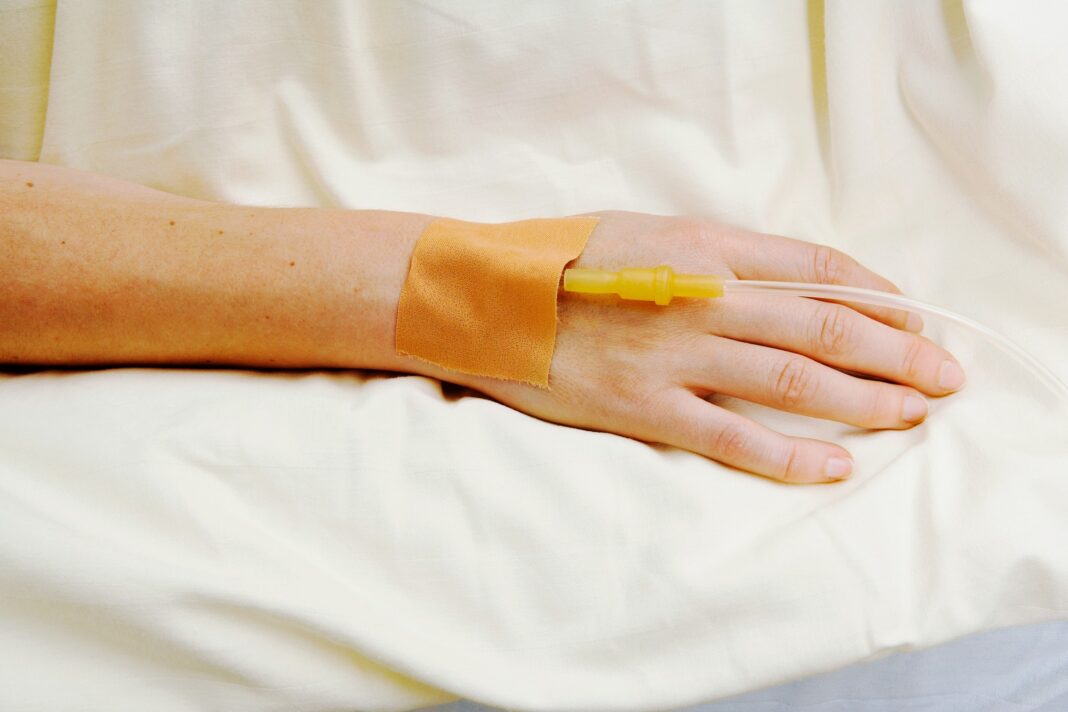In November 2016, German-American entrepreneur Cyriac Roeding read a profile of Sam Gambhir, a physician and scientist at Stanford University School of Medicine, in a magazine. In the article, Gambhir described how he had devoted his career to early cancer detection, only to lose his teenage son Milan to a highly aggressive brain tumor in 2015. Roeding, the cofounder and former CEO of mobile shopping app Shopkick, was struck by Gambhir’s story and immediately sent him an email, asking to meet.
Over the next few months, the pair developed a friendship and Gambhir became Roeding’s guide to the complex world of biology and engineering. One day, Gambhir pitched his own idea—a poignant one. “Sam asked a simple but profound question,” Roeding remembers.
“He said, ‘What if we stopped searching for cancer altogether; what if we didn’t look anymore? What if, instead, we forced the cancer to reveal itself?’” With cancer, time is of the essence—the quicker it’s found, the longer the patient will live. Early cancer detection has become a key target in oncology—there are dozens of companies working on liquid biopsy technology, which scans blood samples for fragments of DNA shed by cancer cells. But this wasn’t good enough for Gambhir.
His painful personal experience told him that waiting for cancer to grow large enough to be detectable in the bloodstream was too slow, and it didn’t tell you anything about where to find the tumor. “We cannot rely on cancer signals that nature may simply not provide to us at all times,” he told Roeding. “But if we bioengineer the signal, then early tumors can become consistently visible.
” That’s the premise behind Earli, which Roeding and Gambhir launched together in June 2018. The California-based startup has already raised $40 million from Andreessen Horowitz, Marc Benioff, and Khosla Ventures. Earli’s approach essentially forces the cancer to reveal itself.
Bioengineered DNA is injected into the body; when it enters cancer cells, it forces them to produce a synthetic biomarker not normally found in humans—something like limonene, a chemical found in the peel of citrus fruits. If subsequent breath or blood tests find traces of that biomarker, it could be a sign of cancer. The next step is figuring out where exactly the cancer is in the body.
An injected compound forces the cancer cells to produce an enzyme that then gobbles up a radioactive tracer, rendering it visible to the naked eye in a scan. Localizing the cancer makes it treatable—clinicians can use precision radiation or targeted surgery to then take it out. Earli is also planning to use the same approach to target and treat cancer—to kill the cells after finding them—although this idea is still in its early stages.
The plan is for Earli to be used at every stage of cancer prevention and treatment: for diagnostic monitoring in high-risk groups like smokers; for pretreatment, to find out if there is cancer anywhere else in the body; during treatment, to make tumors easier for surgeons to locate; and post-treatment, to detect earlier any recurring cancer. Earli’s technology “seems very exciting,” says Shivan Sivakumar, a researcher in early cancer detection at the University of Oxford who is not affiliated with the company. There is “100 percent” a need for it, he says—but first he wants to see the proper clinical trials done.
Those trials started in June 2021 in Melbourne, Australia, after successful test runs in mice and dogs. The first human participant was 84-year-old Ted Cunningham, an engineer with late-stage lung cancer—the goal of the trials is to show that the technology is safe and that it can find cancer in patients already confirmed to have it. “I was diagnosed fairly late with cancer, and that to me was the biggest problem,” Cunningham says.
“If somebody would just get this very early, it would have to be an advantage for the people trying to treat you. ” Sam Gambhir never got to see his idea in action. Six months after the company was founded, he was diagnosed with cancer that had already spread to his bone marrow.
He died 16 months later, in July 2020. “For a guy who spent his entire career trying to prevent this from happening, the irony is not lost on us,” says David Suhy, Earli’s chief scientific officer. Roeding and Suhy feel the pressure to make Earli’s approach work.
“We’re here to carry Sam’s torch,” says Roeding. “And we’ve got to make this thing fly. ” This article appears in the November/December 2022 issue of WIRED UK magazine.
.
From: wired
URL: https://www.wired.com/story/making-cancer-reveal-itself/



